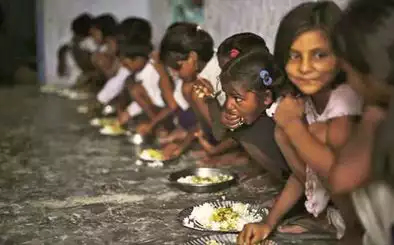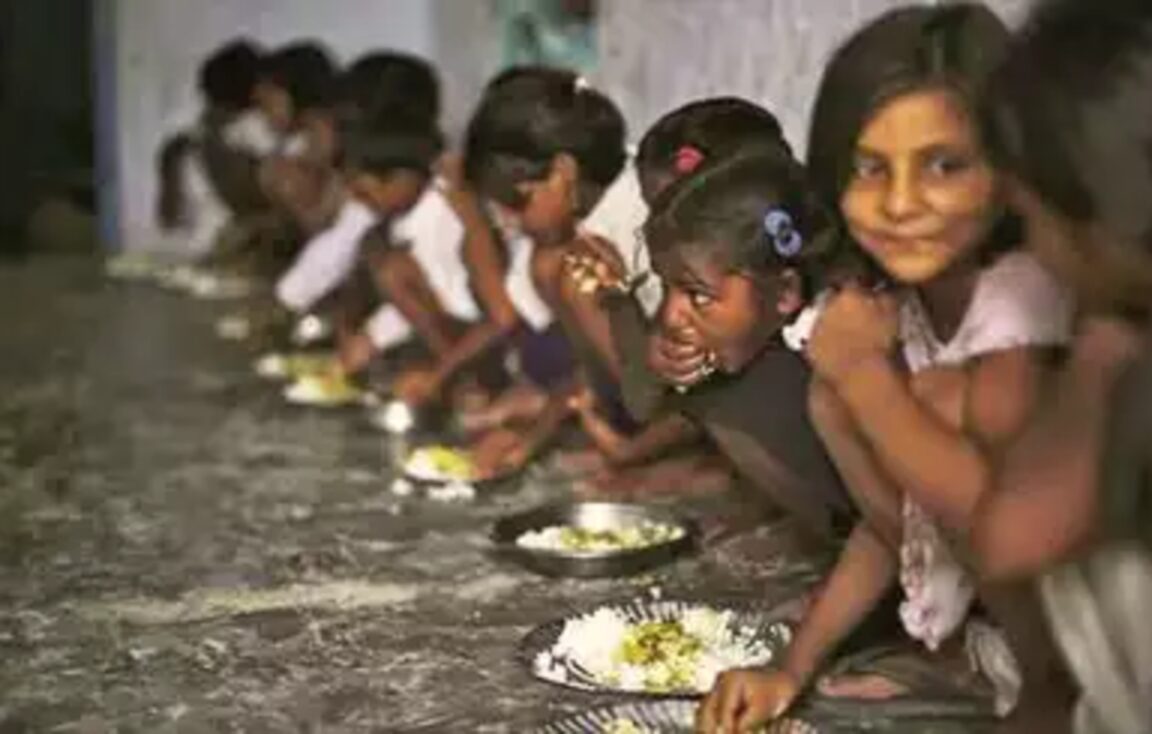
As we mark World Food Day 2024 on October 16, this year’s theme, “Right to Food for a Better Life and a Better Future,” serves as a reminder of the crucial need for food security and nutrition for all. For India, this day holds special significance as the nation continues its battle against hunger and malnutrition. The 2024 Global Hunger Index (GHI) ranks India 105th out of 127 countries, underscoring that despite some progress, there remains much to be done. While India has improved slightly from last year’s ranking of 111, the challenges of child wasting and child stunting remain significant.India’s Hunger and Nutrition Challenge
India’s GHI ranking at 105 seems surprising given the scale of government initiatives aimed at combating hunger. More than 800 million people receive free food through the Public Distribution System (PDS), 120 million children benefit from the PM Poshan program, and 75 million children under the age of six receive free meals or take-home rations. Despite these efforts, India continues to struggle with child stunting (35.5%) and child wasting (18.7%), which are among the highest in the world. These figures indicate that malnutrition remains a severe problem despite substantial government intervention.
The Role of Data: Bridging the Gaps
One reason for India’s low GHI ranking lies in the data used. The Global Hunger Index currently relies on NHFS-5 (2019-21) data, which reports a child wasting rate of 18.7%. However, more recent data from the Poshan Tracker (November 2023) shows that only 6% of children under five are wasted. If this updated data were used in global assessments, India’s ranking could improve significantly. The Poshan Tracker, which monitors around 75 million children in real-time, provides a more accurate snapshot of the country’s nutrition landscape. There is a strong case for incorporating this data into international estimates, such as the UNICEF-WHO-World Bank Joint Malnutrition Estimates.
For stunting, the issue lies not just in data but in the standards used to measure it. The World Health Organization (WHO) currently uses standards based on the Multi-Centre Growth Reference Study (MGRS), conducted between 1997 and 2003. This study mainly drew data from children in South Delhi, predominantly from Punjabi families, where children tend to be taller compared to those in other regions, such as the Northeast. This limited scope fails to account for India’s diverse genetic and regional differences, distorting the true picture of malnutrition. NITI Aayog is working to revise these standards, and India should push for the WHO to update its benchmarks to better reflect its diverse population. This change could lead to more accurate stunting data and improve India’s GHI ranking.
The Impact of Improved Data
Incorporating Poshan Tracker data for wasting and applying more accurate standards for stunting could improve India’s GHI score from 27.3 to 12.67, potentially moving India up to 62nd place—better than Bangladesh but still behind Sri Lanka. While this would be a significant improvement, it still raises concerns about the underlying issues driving hunger and malnutrition in India.
The First 1,000 Days: Maternal and Child Nutrition
Addressing these issues requires more than just food distribution. The first 1,000 days of a child’s life—from conception to age two—are critical for physical and cognitive development. According to the GHI, child wasting is highest at birth and declines by age three, highlighting an intergenerational cycle of malnutrition. This is driven by inadequate maternal weight gain during pregnancy and low birth weights in infants. Therefore, improving maternal nutrition and ensuring proper infant feeding practices is essential.
A key focus area should be complementary feeding between 6-24 months. This period is crucial for ensuring children receive the nutrients needed for healthy growth. This could also be a catch up phase to overcome inadequate nutrition during pregnancy and exclusive breastfeeding period. Unfortunately, NHFS-5 data reveals that only 1 in 10 children in this age group receive the minimum acceptable diet. This gap needs immediate attention if we are to reduce child wasting and stunting. NITI Aayog has repeatedly flagged this issue, emphasizing the need for urgent intervention.
After the initial immunizations at three months, the next check-up is often not until nine months, leaving a critical window when complementary feeding should begin. Mothers need proper guidance during this time to transition their children from exclusive breastfeeding to semi-solid foods. Ensuring that this guidance is available can play a pivotal role in preventing malnutrition during this vulnerable period.
The Path Forward: A Call for Action
While India has made strides in reducing child mortality and undernourishment, the high rates of child wasting and stunting demonstrate that more needs to be done. Accurate and timely data, such as that from the Poshan Tracker, could improve India’s global ranking, but lasting change requires a comprehensive approach. Prioritizing maternal health, early childhood nutrition, and water, sanitation, and hygiene (WASH) practices is essential to addressing the root causes of malnutrition.
As we observe World Food Day 2024, this is a call to action for all stakeholders—government, international organizations, civil society, and communities—to come together and tackle these pressing issues. A razor-sharp focus on complementary feeding during the critical 6-24 month period is key to breaking the cycle of under-nutrition. Ensuring that every child receives proper nutrition during these early years is not just vital for improving India’s Global Hunger Index ranking—it is essential for securing a better life and a better future for the next generation.
The right to food is a fundamental right, and as a nation, we must work to ensure that no one is left behind on this journey towards a hunger-free India. Together, with better data, focused strategies, and concerted efforts, we can turn this vision into reality.
This article is written by Pawan Agarwal , CEO, Food Future Foundation.
(DISCLAIMER: The views expressed are solely of the author and ETHealthworld.com does not necessarily subscribe to it. ETHealthworld.com shall not be responsible for any damage caused to any person/organisation directly or indirectly)


